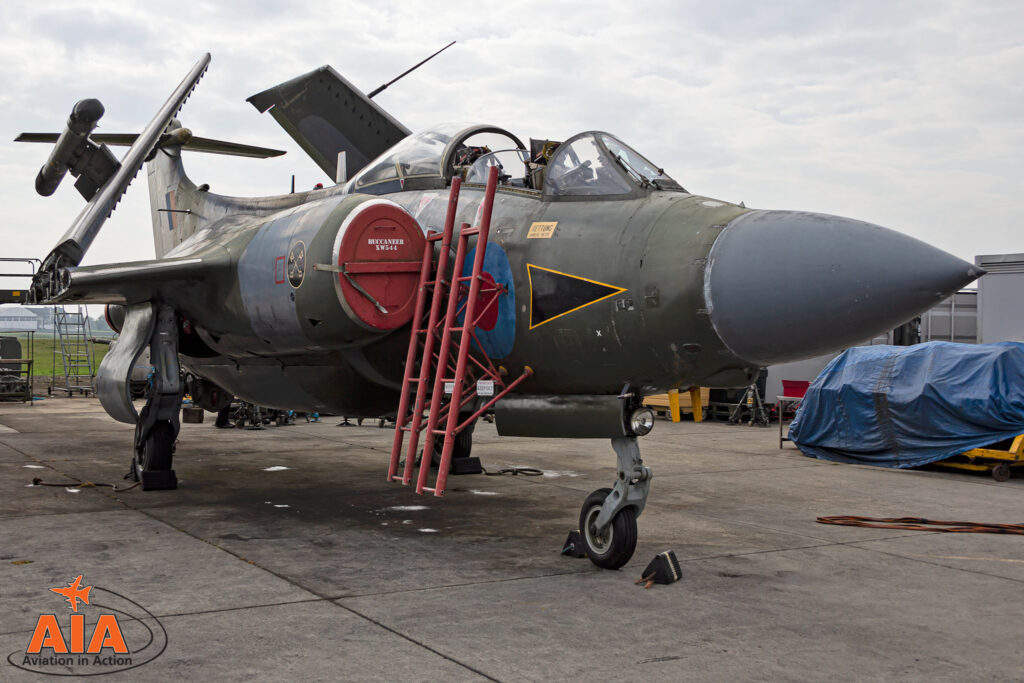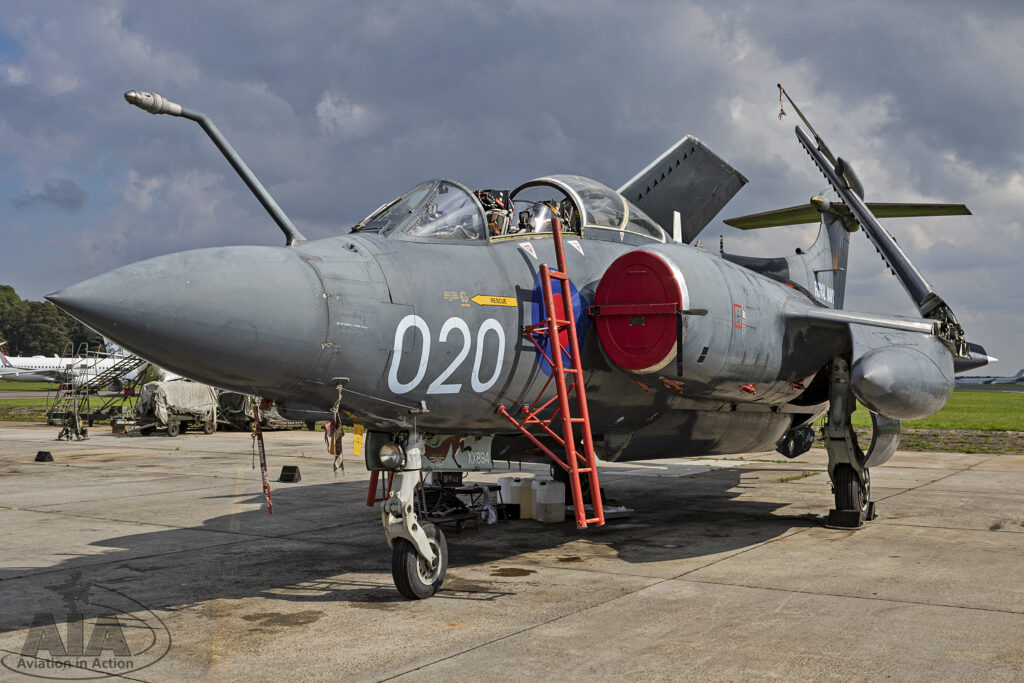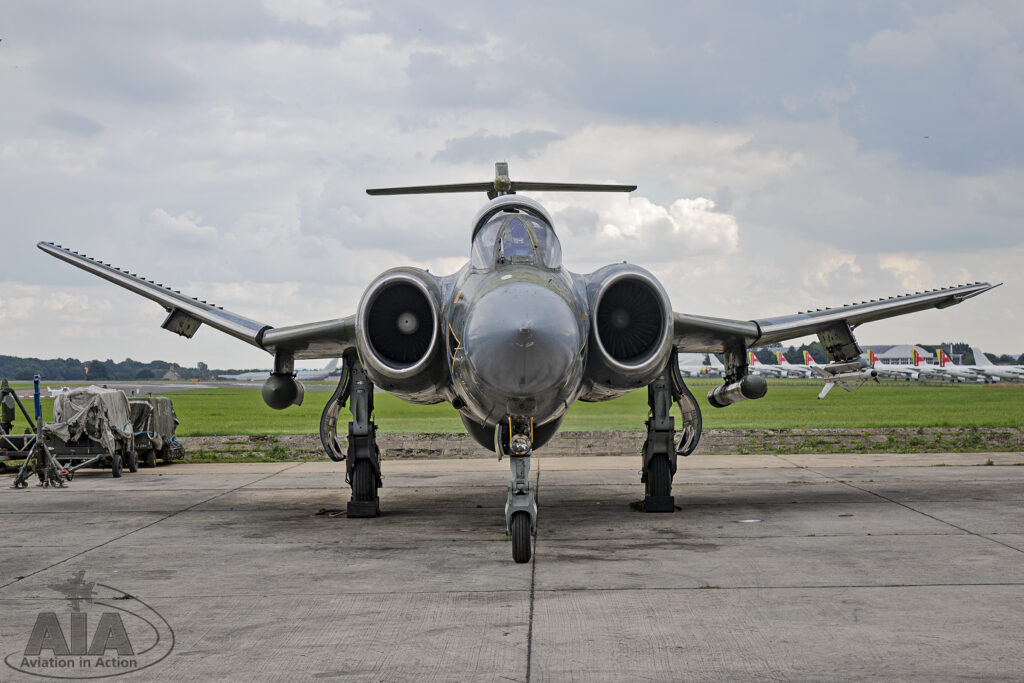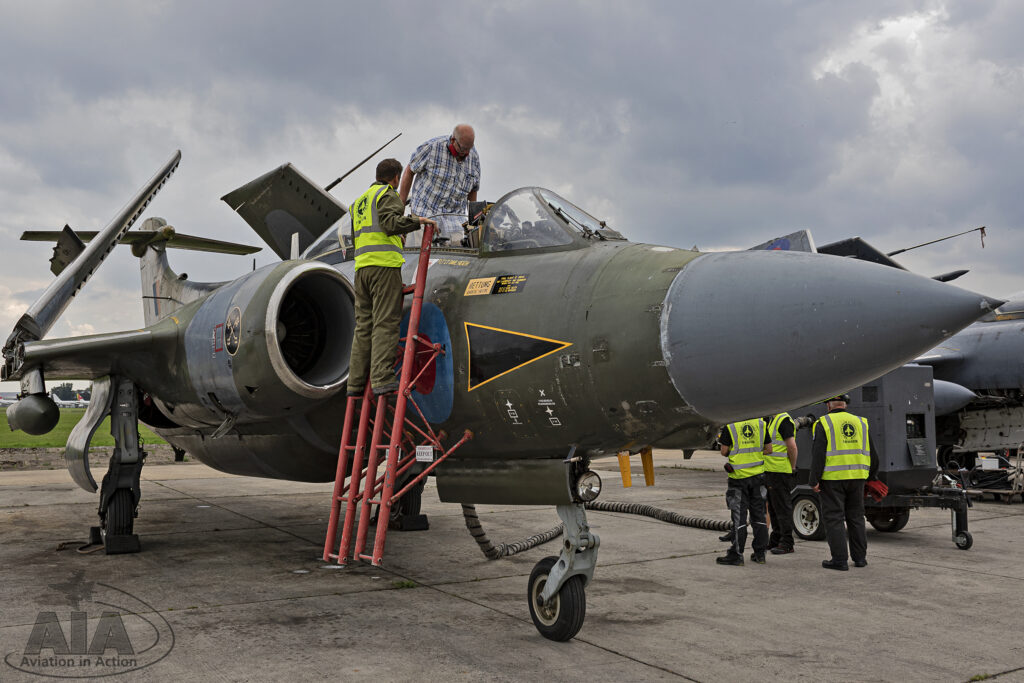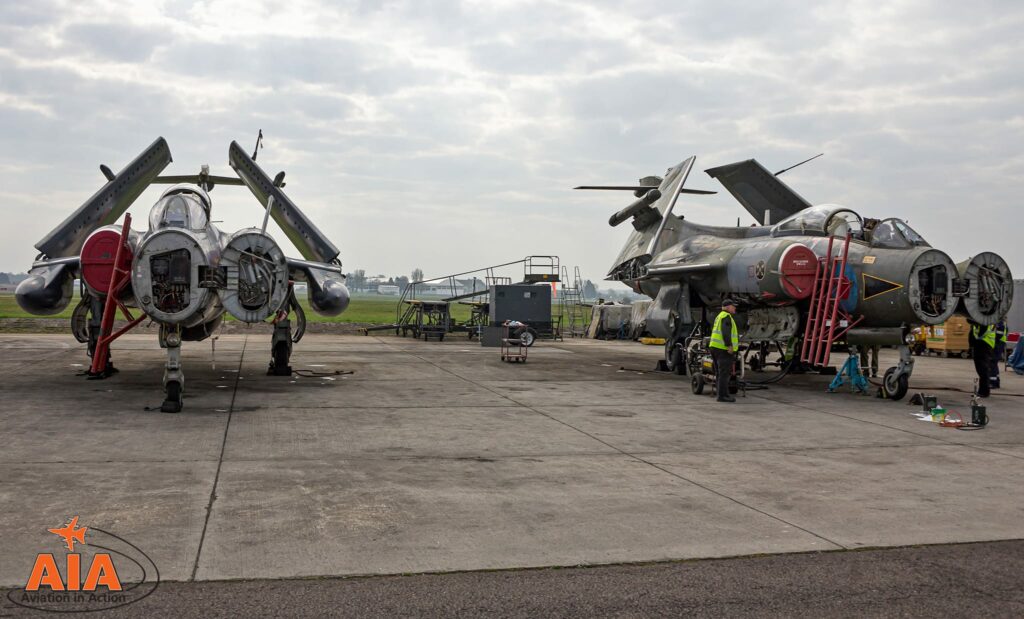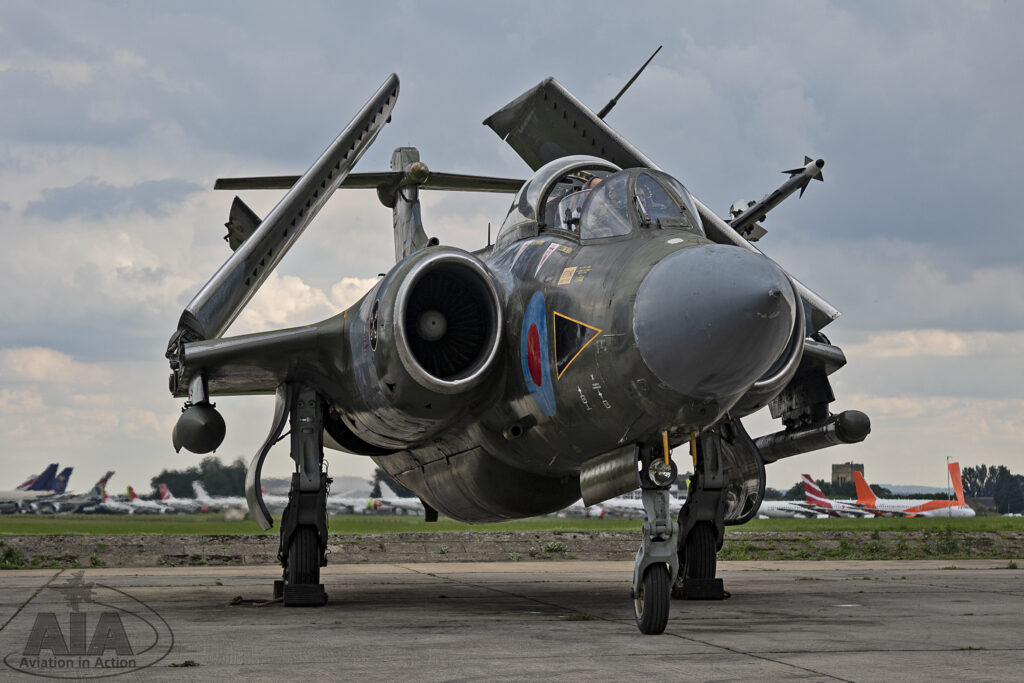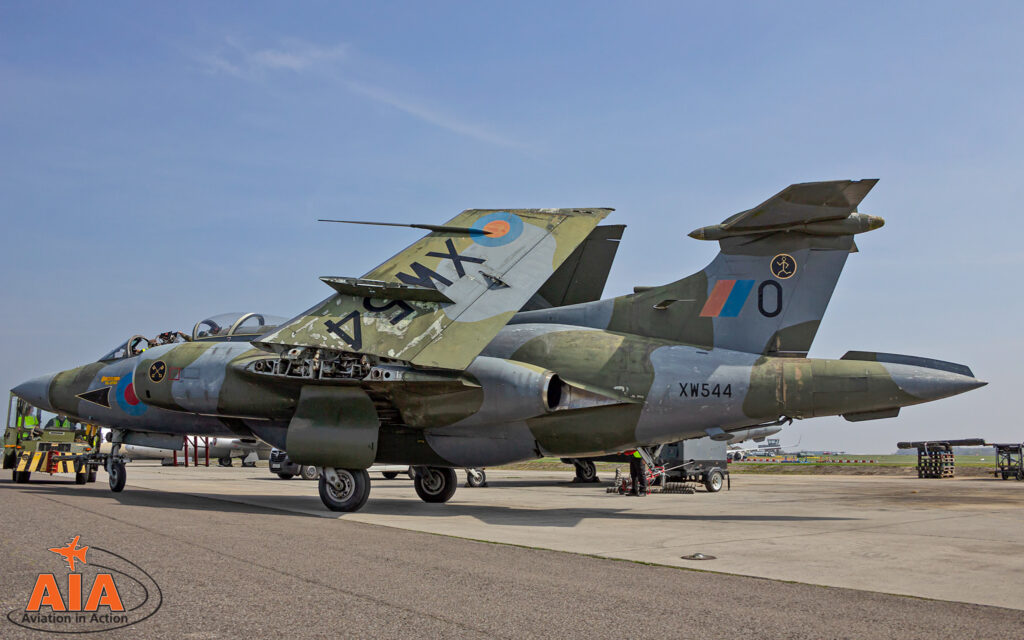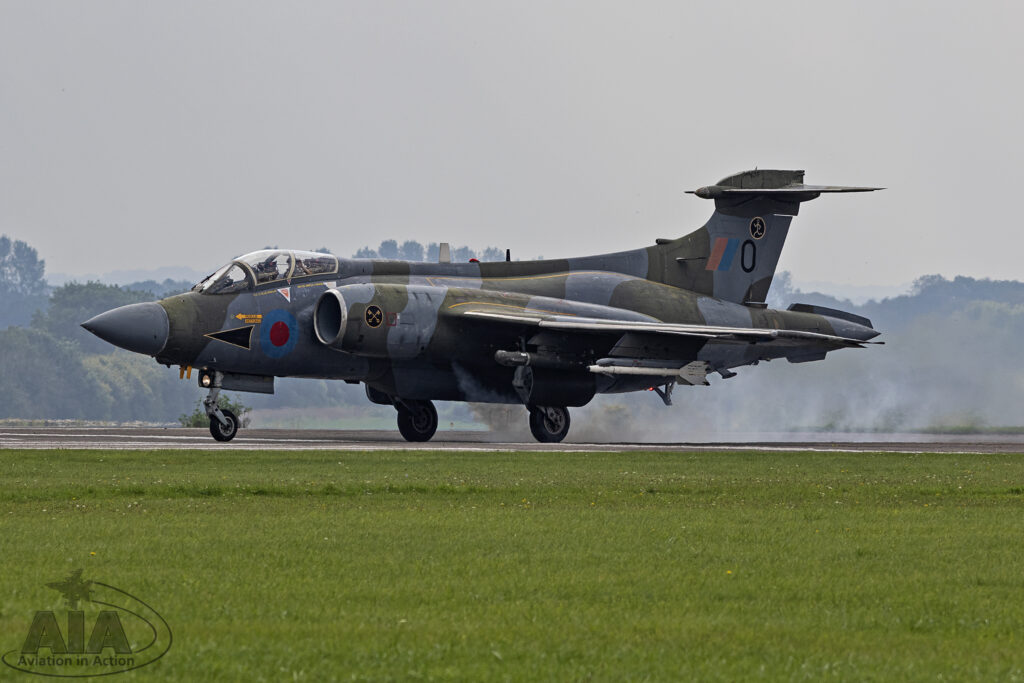Sitting on the flight deck of the HMS Ark Royal, the Buccaneer takes pride and place and puts fear into its enemies. The crew, proud to serve their Queen and country, brace themselves against the biting sea winds to make sure the Buccaneer is ready to take flight and protect the nation. The pilots and navigators take their positions in the cockpit and eagerly await the signal from the deck crews for takeoff. The sound of their beating hearts soon to be drowned out by the roar of the Buccaneer’s Rolls-Royce engines……
After WWII ended, the Soviet Union rapidly expanded their Naval fleet of fast, light cruisers, the Sverdlov-class cruisers. Much like the German “Pocket battleships” of the Second World War, these boats posed a serious threat to merchant fleets crossing the Atlantic. The Royal Navy needed a fast response to the increase of the Soviet Navy’s expanding cruiser fleet, to prevent further attacks on the merchants. As a result, in the 1950’s the first design for the Royal Navy’s new British carrier- based aircraft, the Hawker-Siddley Buccaneer was developed.
The Royal Navy provided a detailed specification in June 1952 of what maritime aircraft they wanted to develop. Their specification included a 2-seat aircraft with folding wings capable of flying at 550 knots at sea level, with a range of 400 nautical miles (NM) at low level and 800NM at higher-level altitudes. They wanted the aircraft to be able to carry 8,000lbs of weapons including conventional bombs, the “Green Cheese” anti-ship missile and the “Red-beard” free fall nuclear bomb.
The first response to the Navy’s specification was returned in 1953 and later in July 1955, the development of the aircraft began. During the development stages, Blackburn designed revolving bomb-bay doors which exposed the weapons mounted on the inside of the single bomb-bay door, allowing for quick release without causing an increase in the drag of the aircraft. The Buccaneer also featured hardpoints under the wings which allowed 450kg bombs, missiles, fuel tanks and other equipment such as flares to be mounted to them. By 1965, the Buccaneer was tested and cleared for the delivery of nuclear weapons which were carried inside the aircraft on the rotating bomb-bay doors. As the development of the aircraft evolved, the initial under-wing hard points were upgraded to carry electronic warfare and laser designator pods.
Due to the high-level security development, the project was named BANA – Blackburn Advanced Naval Aircraft. This led to the crews giving it the nickname “Banana Jet” with the first prototype flying from Royal Aircraft Establishment Bedford in April 1958.
The Buccaneer was developed predominately as a maritime nuclear strike aircraft that was eventually able to carry multiple different kinds of weapons when it fully entered service with the Royal Navy in July 1962. The first Fleet Air Arm squadron equipped with the Buccaneer S.1 was 801 based at RNAS Lossiemouth in Scotland. The Buccaneer S.1 replaced the Fleet Air Arm’s Supermarine Scimitar, which had been performing the naval attack mission before their arrival. Once officially accepted into the Fleet Air Arm, the aircraft was painted dark grey on top and anti-flash white underneath. The anti-flash white colour was developed to protect the aircrew on board from any thermal radiation that would come from nuclear explosions after releasing their nuclear weapons.
The S.1 was short lived in the Fleet Air Arm with the early development of the S.2 in April 1965 to be completed later that year. The improved version of the Buccaneer became invaluable when it became the first Fleet Air Arm aircraft to fly across the Atlantic Ocean non-stop without refuelling. This would give the Buccaneer an advantage on other naval aircraft that were in use at that time.
During the 60’s and 70’s a total of six Naval Air Squadrons were equipped with the Buccaneer: Training units – 700B/700Z and 736, 800, 801, 803 and 809 Squadrons. During this time these Squadrons were deployed on to HMS Victorious, Eagle, Ark Royal and Hermes where they took part in multiple operations including
- The bombing of the super-tanker Torrey Canyon off the Cornwall coast in 1967; In 1972,
- A 2,400 km mission to provide a military presence over British Honduras (Belize) from the HMS Ark Royal, to deter Guatemalan invasions during the months before Belize’s independence;
- They were also used in regular patrols and exercises over the North Sea, practicing the S.2’s role if war was to break out with the Soviet Union.
In 1978 the Buccaneer was retired from service with the Fleet Air Arm when they decommissioned the last of the navy’s fleet carriers, the Ark Royal.
The retirement of the aircraft was part of a highly controversial withdrawal of British forces in East Suez, resulting in a view that the Fleet Air Arm no longer needed aircraft carriers or any fixed-wing naval aviation in general. The result of the Buccaneer retirement saw the introduction of the smaller V/STOL- capable British Sea Harrier.
During the phased retirement from the Fleet Air Arm, the Buccaneers was introduced into the Royal Air Force taking on the maritime strike role. 62 of the 84 Buccaneers S.2s transferred across and were re-branded as the S.2A.
Once transferred across fully to the RAF, the Buccaneer S.2A formed numbers 16 Squadron and 15 Squadron based at RAF Laarbruch, 208 Squadron at RAF Honnington, plus 237 Operational Conversion Unit (OCU); All assigned to Supreme Allied Commander Europe (SACEUR) for land strike duties that supported land forces in continental Europe. Number 12 Squadron was assigned to Supreme Allied Commander Atlantic (SACLANT) for maritime strike duties.
During the 1970’s the Buccaneer Squadrons did not get much opportunity to take part in realistic training exercises, so in 1975 when the US began its Red Flag exercises at Nellis Airforce Base in Nevada USA, the RAF become eagerly involved sending 10 Buccaneers and 2 Avro Vulcan bombers to take part.
During the Red Flag exercises, the Buccaneer proved very successful with the low-level, fast attacks and were able to infiltrate enemy defences allowing them to be credited with “Kills” on defending fighters using air-to-air missiles; this made the Buccaneer hugely accurate despite the aircrafts lack of terrain-following radar and other more modern avionics that the other aircraft taking part in the exercise were using.
In 1980 the RAF Buccaneer fleet was grounded as a result of a fatal fatigue-induced crash. Investigations were conducted and as a result, 60 aircraft were selected to receive new parts while others were scrapped. Because of this 216 Squadron based at RAF Waddington was disbanded due to insufficient aircraft. Later that same year, all the UK based Squadrons were moved to RAF Lossiemouth to make way for the Tornado at RAF Honnington.
In the 80’s and 90’s the aircraft continued to take part in multiple exercises all over the world, including peace keeping efforts in Lebanon as part of Operation Pulsator. In 1991 it took part in 218 missions as part of Operation Granby (Gulf War I), despite initial thoughts that the need for the Buccaneer to take part in the conflict to be “highly unlikely”. As part of Operation Granby, formations made up of 4 Tornados and 2 Buccaneers flew missions into Iraq and using the Buccaneer’s Pave Spike laser designator pods, dropped precision guided weapons on key Iraqi facilities.
Although the initial plan was to keep the Buccaneer in service with the RAF until the end of the 1990’s, the end of the Cold War initiated a change in British Defence policy, causing many aircraft to be seen as surplus to requirements. It was at this point that it was decided the Tornado’s would be modified to take over the RAF’s maritime strike missions and by 1994 all Buccaneers would be retired from RAF service.
The Buccaneer Aviation Group (TBAG) is a non-profit organisation based at Cotswold Airport (Formerly RAF Kemble). TBAG are made up of volunteers dedicated to the preservation and maintenance of two ex-RAF Buccaneer aircraft, XX894 and XW544. The aim of the organisation is to honour the service and dedication of the air and ground crews, the engineers and all the memories associated with the Buccaneer.
Former Buccaneer observer John (JJ) Parson, of 16 Squadron, was the last observer to in fly XX984 in 1994 and was recently interviewed by Aviation in Action on their livestream of the event. When asked about his time on the Buccaneer, he replied
“Flying the Buccaneer was absolute magic – It’s like riding a thoroughbred, it just goes! It’s a big heavy lump of British engineering; it’s a very comfortable ride, noisy, but we left that all behind us! I flew 148 times with my Navigator when we were together in 16 Squadron and never got bored!” -John Parson, April 16th 2022.
TBAG was initially based at Bruntingthorpe Aerodrome, but in 2020, TBAG moved both aircraft to Cotswold Airport with a plan for both XX894 and XW544 to regularly perform fast taxi runs to the public and to participate in night photoshoots.
TBAG not only has 2 full working Buccaneers, but it is also involved in the maintenance of the cockpit section of a third Buccaneer XW550, which continues to be a travelling exhibit and can be seen at several events throughout the UK to promote the organisation and the work they do.
TBAG is the only organisation which is dedicated to the Buccaneer and provides support and assistance to preserved Buccaneers around the world.
XX894 is an S.2B model that was originally based at RAF Laarbruch in Germany. This aircraft started its RAF career in 1975 and was part of 16 and 15 Squadrons.
In 1980, XX894 took part in the Red Flag exercise at Nellis Air Base in the USA but unfortunately, the aircraft was grounded due to the discovery of cracks in the wing spar. XX894 was chosen to be repaired and went on to serve with 208 Squadron, 237 OCU and 12 Squadron based as RAF Lossiemouth.
In 1990 to mark the 75th anniversary of 12 Squadron, XX894 was painted with large green and black flash from the tail down the side of the fuselage to its nose cone on both sides.
In 1991 XX894 was prepared for operations in the first Gulf War. It was given an updated secure radio and with an Alkali Removable Temporary finish (ARTF) – also known as Desert Pink paint scheme. During the Buccaneer’s time in the Gulf war, each participating aircraft were given names and a tail code, XX894 was known as “Aberlour ‘O’”.
During its time in the Gulf War XX894 was the only aircraft to destroy another aircraft when it attacked Antonov AN-12 taxiing on the Iraqi airfield, Shaykh Mazhar. Unfortunately for the aircraft, XX894 missed out on all the praise for this attack as when the pilot taxied back, Buccaneer XX885 was parked was in their parking slot. This resulted in XX885 getting the praise and receiving the AN-12 symbol on its nose instead of XX894.
XX984 was retired in 1994 and the final flight was to RAF St Athan for disposal. The aircraft was then purchased by Garry Spoors, who transported it along with XX900 by road to Bruntingthorpe Proving Ground in Leicestershire.
XX894 was subsequently moved to RAF Kemble and was put on static display at air shows, maintained by the Buccaneer Supporters Club. In 2003, Guy Hulme bought the airframe to put in his garden as a memorial to his father who flew as an observer and sadly lost his life in service.
After many years of persuasion Guy made the decision to let the Buccaneer be moved back to Bruntingthorpe so full restoration of the aircraft could start.
In 2007, XX894 and XW544 banded together and became The Buccaneer Aviation Group (TBAG) where full restoration was begun on them.
In 2020, the aircraft were moved to RAF Kemble, now known as Cotswolds Airport. Maintenance started right away after they arrive to restore the aircraft to their former glory – Covid however, slowed this down, but 2020 finally saw the first anti-det run at their new home. These runs continue to be performed regularly for the TBAG supporters and as a reward to the Crowdfunder supporters who paid for backseat static runs.
XW544 entered RAF service in 1972 with 15 Squadron based at RAF Laarbruch in Germany. It had a troubling career with both 15 Squadron and 16 Squadron, with many fuel leaks causing the aircraft to be withdrawn from service in July 1983 with 2227:10 flight logged and sent to RAF Shawbury. XW544 was placed into storage and used as a donor aircraft with its engines and other various instruments being removed to help keep the rest of the fleet flying.
By 1984, XW544 had been moved to RAF Cosford’s No.2 School of Technical Training (SoTT) to be used as a maintenance aircraft. During its time with SoTT, the aircraft’s camouflage green was repainted, and the previous 16 Squadron markings were reapplied. A new refuelling probe was also added, however the aircraft never flew or retired with it.
During it’s time at RAF Cosford, XW544 could be seen on show during air show weekends alongside Buccaneer XW547 (now at Hendon).
By the time the Buccaneer was retired from service altogether, SoTT no longer had any use for the aircraft and sold it on the Rob Goldstone, who transported XW544 to Shawbury for open storage. The airframe sat in the yard covered with tarpaulin in need to TLC. By 2004, the aircraft was once again on the move after being obtained by Dave Webber, Andy Webber and George Palmer, who transported it to Bruntingthorpe Proving Ground to join Buccaneers XX894 and XX900 for restoration to full running condition. After many years of hard work from the volunteers at Bruntingthorpe, XX894 and XW544 performed the first engine runs in over 25 years in May 2004.
In 2011 XW544 received a much need repaint which was revealed in March 2012 in an event that introduced all 3 saved Buccaneers, XW544, XX894 and XX900 for taxi runs and celebrated the amazing restoration achievement of all the volunteers. Names of the volunteers who were involved in the were added in vinyl to the nose door and were there for several years.
For 16 years, XW544 was used at every Cold War Jet and TBAG event, but in 2020, the end of the vintage cold war fast taxi runs at Bruntingthorpe was announced. After the decision to end the taxi runs was made, the choice to move XW544 and XX894 to RAF Kemble (Cotswold Airport) was made allowing both aircraft to continue performing fast taxi runs.
For several months after the arrival at the airport, due to the Covid-19 pandemic, the 2 aircraft were left untouched, but in October 2020, XW544 had its first anti-deterioration run which was a huge success. As the pandemic restrictions started to ease, more volunteers started working on the aircraft and in June 2021, XW544 had its first blast down the 2-mile-runway and one month later in July, the aircraft performed its first public taxi run which was a huge success. TBAG intends to continue performing fast taxi runs for past and future generations to experience.
To hear more about the wonderful work of The Buccaneer Aviation Group, please visit their website at https://the-buccaneer-aviation-group.com/
Also please consider donating or purchasing items from their shop to support this very worthwhile cause.


